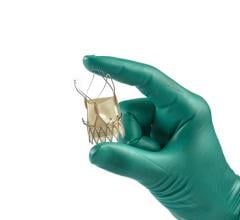
July 12, 2019 — Internet search engine giant Google unveiled a new Doodle on its homepage Friday, July 12, 2019, celebrating the life and work of cardiac surgeon Rene Favaloro on what would have been his 96th birthday. Favarolo, originally from Argentina, was one of the early pioneers of coronary artery bypass graft (CABG) surgery.
Favaloro was born in La Plata, Argentina, in 1923. He studied medicine at the National University of La Plata, and in his third year of study began a residency at the Hospital Policlínico San Martín. Favaloro graduated with a medical degree in 1949 and moved to the small town of Jacinto Aráuz, in the La Pampa desert region of Argentina approximately 700 km (435 miles) from the capital in Buenos Aires.
Jacinto Aráuz and the surrounding area were remote at the time, and Favaloro helped modernize the city’s healthcare system. He introduced the city’s first operating room and X-ray systems, and improved the laboratory as well. “I began my activity with 12 years of country practice … and it was my destiny to end up in a tiny town, Jacinto Aráuz, in the west of the dry Pampa, where the desert begins, to live among very poor people,” Favaloro said in a video produced by the Favaloro Foundation (Fundacion Favaloro) in 2017 celebrating the 50th anniversary of the first CABG procedure.
During his tenure in Jacinto Aráuz, Favaloro kept up with the latest in cardiac interventions through journals, and a mentor told him about the pioneering work being done in the field at the Cleveland Clinic. So in 1962 he traveled to Cleveland and worked alongside Donald B. Effler, M.D., head of cardiovascular surgery, William L. Proudfit, M.D., head of the Department of Cardiology and F. Mason Sones, Jr., who was in charge of the Angiography Laboratory (and for whom the F. Mason Sones Cardiac Catheterization Laboratory at the Cleveland Clinic is named). Sones also served as the first president of the Society for Cardiac Angiography, now known as the Society for Cardiovascular Angiography and Interventions (SCAI).
While working at Cleveland Clinic, Favaloro began to consider new alternatives for coronary artery bypass surgery. The first such procedure had been performed in 1960 at the Albert Einstein College of Medicine-Bronx Municipal Hospital Center, creating an anastomosis between the right coronary artery and the internal mammary artery.1 Favaloro instead considered using the saphenous vein, which runs through the leg and is the longest vein in the body, as a graft to bypass a coronary artery stenosis. “The saphenous vein was already used … for peripheral surgery and … renal circulation. So I said, ‘Why not use it at the coronary level? If it works there, it is bound to work here as well,’” said Favaloro in the Favaloro Foundation video.
He performed the first procedure of what is now known as coronary artery bypass graft (CABG) surgery in May 1967, and today it remains one of the most common cardiac procedures in the world. An estimated 200,000 isolated cases are performed annually in the U.S., and western Europe sports an average incidence rate of 62 per 100,000 inhabitants.2
Favaloro returned to Argentina in 1971 and four years later established the Favaloro Foundation, a nonprofit organization designed to provide medical care, generate scientific knowledge and educate health professionals across Latin America. In 1992, the foundation opened the Institute of Cardiology and Cardiovascular Surgery in Buenos Aires, which today offers specialized treatments for heart, lung, liver, kidney and bone conditions, among others.
Favaloro took his own life in 2000 at the age of 77. “Although he was always hesitant to carry the moniker of ‘father’ of coronary artery bypass surgery, he is the surgeon we should credit with introducing coronary bypass surgery into the clinical arena,” wrote Denton A. Cooley, M.D., (who himself performed the first implantation of a total artificial heart), in a tribute to Favaloro published in Texas Heart Institute Journal. “Indeed, Dr. Favaloro’s pioneering contributions to cardiovascular surgery will be an enduring legacy to his homeland of Argentina and to humanity.”
Click here to see Google’s interactive exploration of Favaloro’s life and work.
References
1. Dee R. Who Assisted Whom? Texas Heart Institute Journal, 2003.
2. Melly L., Torregrosa G., Lee T., et al. Fifty years of coronary artery bypass grafting. Journal of Thoracic Disease, March 2018. doi: 10.21037/jtd.2018.02.43


 October 23, 2024
October 23, 2024 








